WWII 75: Marching to Victory | August 6, 2020
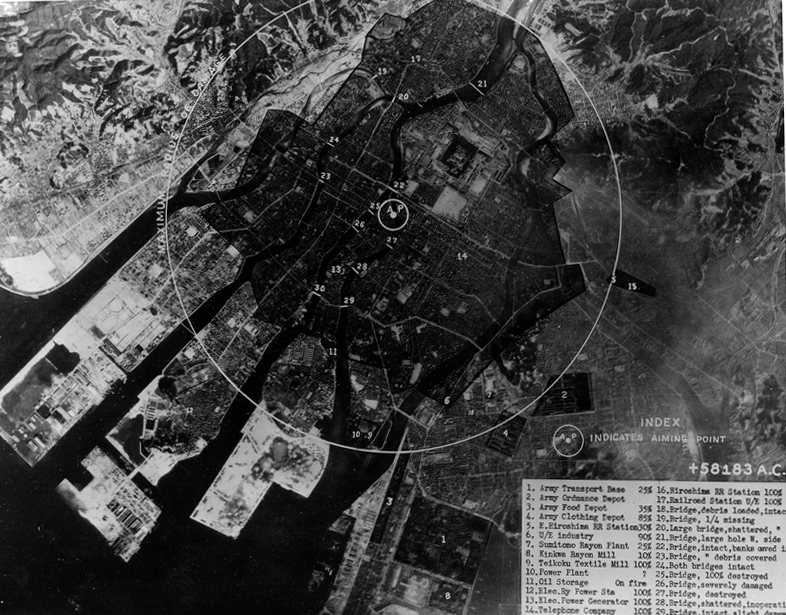
WWII highlights from the Truman Library’s archives and collections
Marching to Victory: The Bombing of Hiroshima
August 6, 1945
At 8:15 AM on August 6, 1945, an American B-29 bomber opened its bay doors over the Japanese city of Hiroshima and released a solitary bomb. Forty-four seconds later, it exploded 1,900 feet above the city. This single explosion brought the Second World War into its final phase and revealed to the world a new and devastating weapon.
Today, visitors to the Harry S. Truman Library and Museum’s digital archives can open a window onto the bomb and Hiroshima’s fate through a remarkable series of photographs archived there.
These images reveal the incredible power of the atomic bomb.
One photograph contained in the Robert A. Lovett papers documents Little Boy, the weapon dropped on Hiroshima. Scientists working for the Manhattan Project designed this and other atomic bombs at a secret laboratory in Los Alamos, New Mexico. Little Boy was ten feet long, 9,000 pounds in weight, and contained uranium-235 with the explosive potential of 20,000 tons of TNT. The revolutionary power of bombs like Little Boy sparked debate in U.S. military circles and President Harry Truman’s cabinet about the use of the bomb.
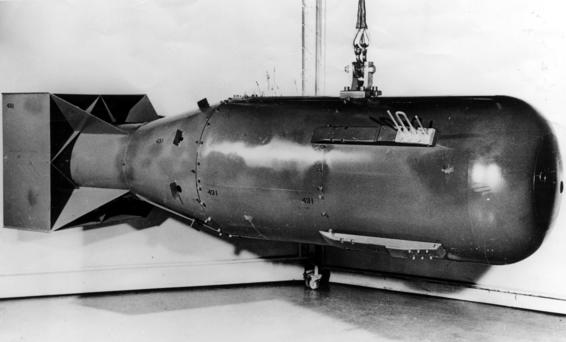
The operation fell to a twelve-man B-29 crew led by Colonel Paul Tibbets, Jr., who piloted a plane named after his mother. Among the photographs in the Truman archives is this shot of the Enola Gay with the copied autographs of Tibbets and crew members.
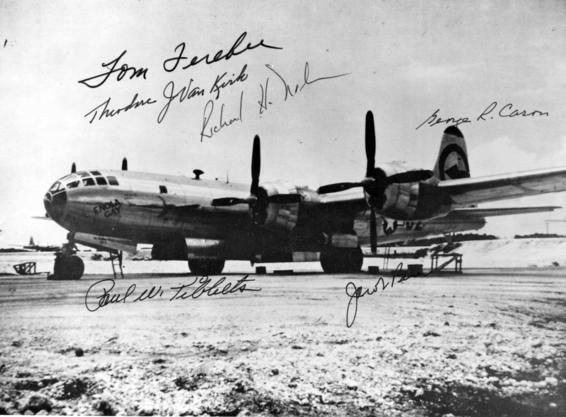
Other photographs depict Little Boy’s devastating effects on Hiroshima. In one sense, Little Boy was a failure. After the crew of the Enola Gay dropped the bomb, only a small amount of its uranium fissioned, but the resulting explosion leveled 5.4 square miles of the city and killed over 100,000 soldiers and civilians. In two images from a scrapbook owned by Postmaster General Robert E. Hannegan, mountains loom over a desolate landscape of building shells and telephone poles. Just a few scattered humans can be made out among the ruins.
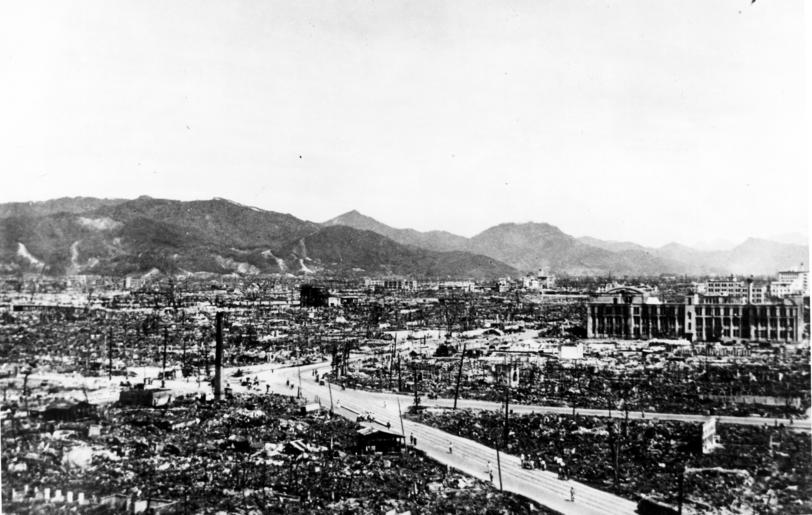
These photographs starkly document the bomb and its effects. Other images in the Truman Library’s collections, however, testify to the spirit of the tiny figures barely visible in the 1945 shots. Four years after the attack, the Japanese government designated Hiroshima a City of Peace and began funding reconstruction and memorial-building efforts. Whereas photographs from August 1945 show a ruined landscape, images taken eighteen years later depict Peace Memorial Park—built on the site of the explosion’s hypocenter and a site of peace conferences to this day—and acres of homes and businesses. In the wake of the devastating attack, the surviving residents of Hiroshima rebuilt their historic city and dedicated it to peace.
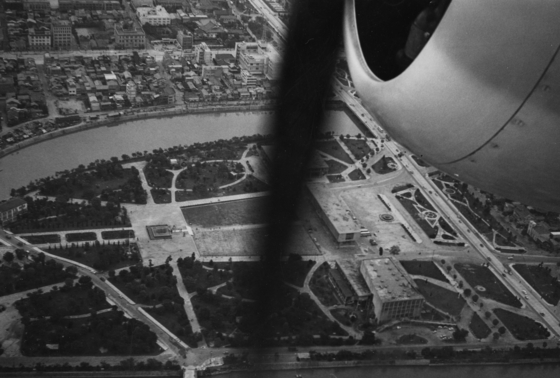
But all of that was in the future in early August 1945. Not even the shocking destruction wrought on Hiroshima convinced the Japanese government to surrender. Stay tuned for the final posts in the Marching to Victory series in the coming weeks.
EDITOR’S NOTE: No known written record exists in which Harry Truman explicitly ordered the use of atomic weapons against Japan. The closest thing to such a document is a hand-written order, addressed to Secretary of War Henry Stimson, in which Truman authorized the release of a public statement about the use of the bomb. It was written on July 31, 1945, while Truman was attending the Potsdam Conference in Germany. In effect, this served as final authorization for the deployment of the atomic bomb, though the expression “release when ready” refers to the public statement.
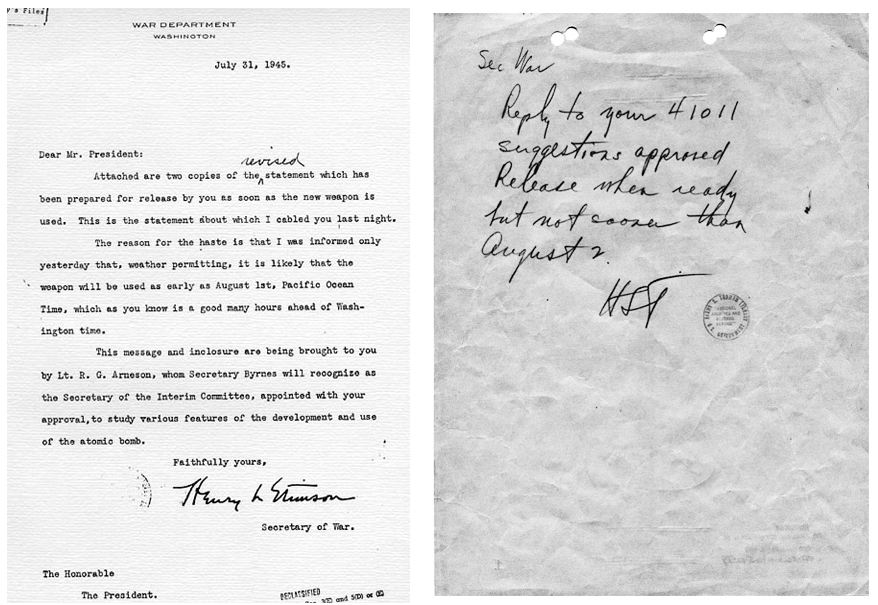
More to Explore
- Find more photos and documents related to World War II and the bombing of Hiroshima at TrumanLibrary.gov.
- Relive history in The White House Decision Center. Step back to 1945 and into the roles of President Truman, J. Robert Oppenheimer and other West Wing advisors. How will WWII end? You decide.
Marching to Victory
75 years ago, World War II ended under President Truman’s decisive leadership. Now, follow key events from the war’s final months with the Truman Library Institute’s series, “Marching to Victory: WWII Highlights from the Truman Library’s Archives and Collections.” The 25-part blog series opens the vaults at Truman’s presidential library to share eyewitness accounts and historic artifacts related to major conflicts and monumental victories – from the Battle of the Bulge to the liberation of Dachau to the unconditional surrender of Japan.
More in this series:
Marching to Victory: The Bombing of Dresden
Marching to Victory: The Yalta Conference
Marching to Victory: The Battle of the Bulge
Marching to Victory: The Tokyo Fire Raids
Marching to Victory: The Battle of Okinawa
Marching to Victory: The Liberation of Buchenwald
Marching to Victory: “The President is Dead”
Marching to Victory: The Liberation of Dachau
Marching to Victory: The Death of Adolf Hitler
Marching to Victory: Germany Surrenders!
Marching to Victory: Victory Gardens
Marching to Victory: Civil Rights
Marching to Victory: The United Nations
Marching to Victory: How Children Helped Win the War
Marching to Victory: The First Atomic Bomb Test
Marching to Victory: The Potsdam Conference
Marching to Victory: The Potsdam Declaration
Contributed by Will Hickox, Ph.D. He has written for The New York Times and contributed to several digital history projects.
Join our email list to receive Truman updates right in your inbox:



